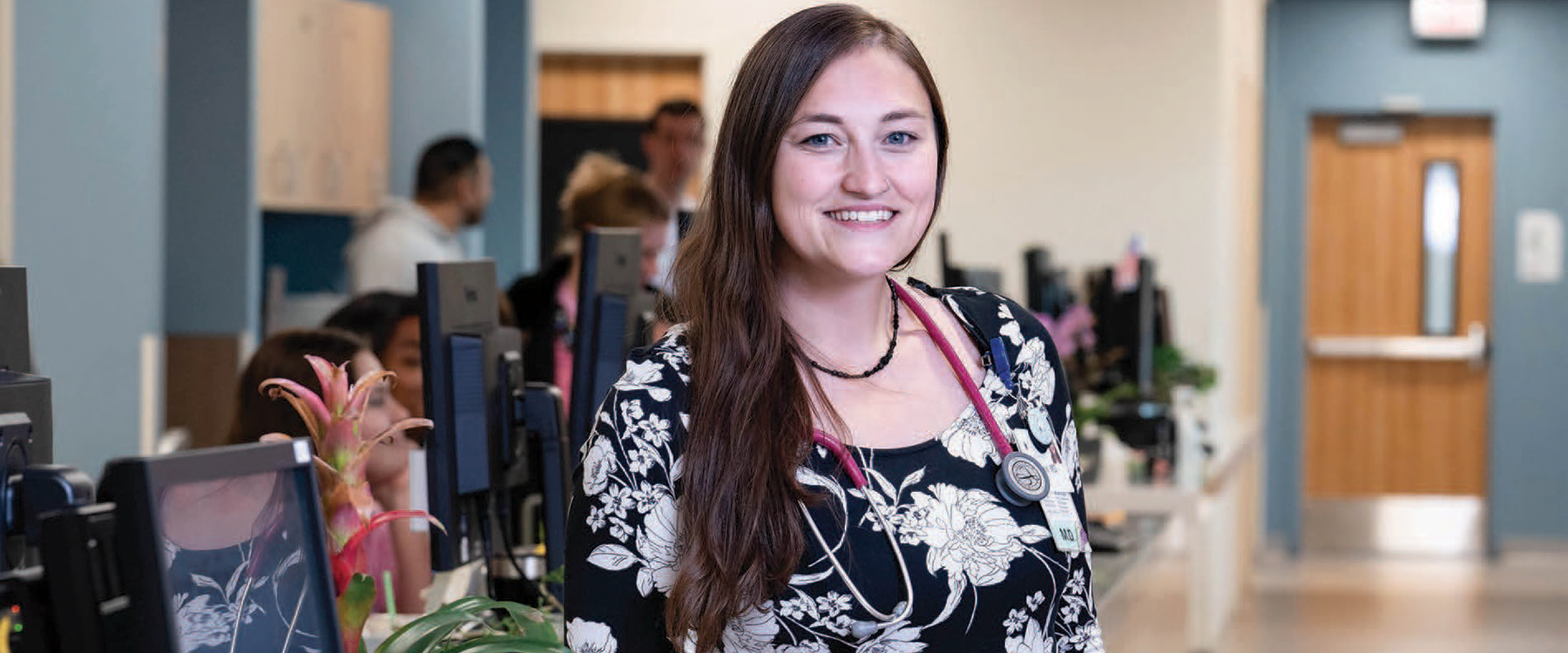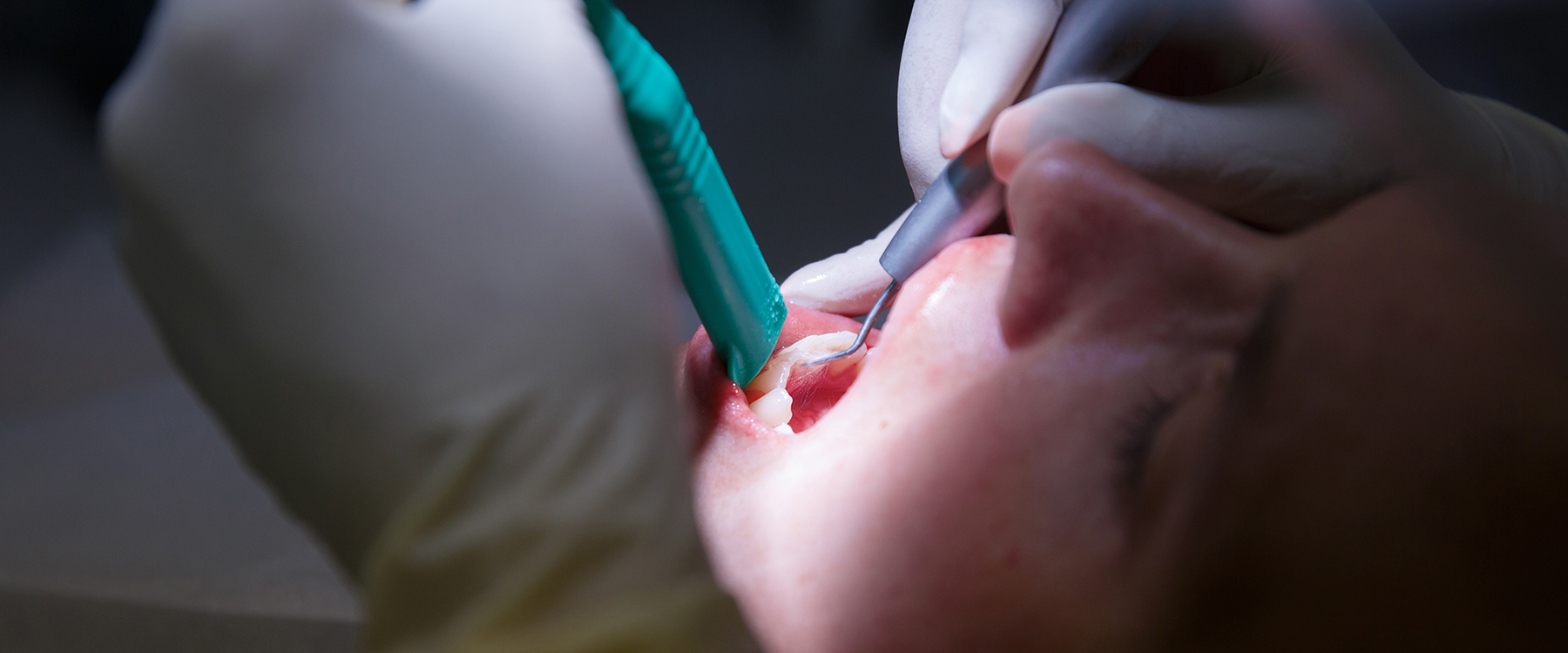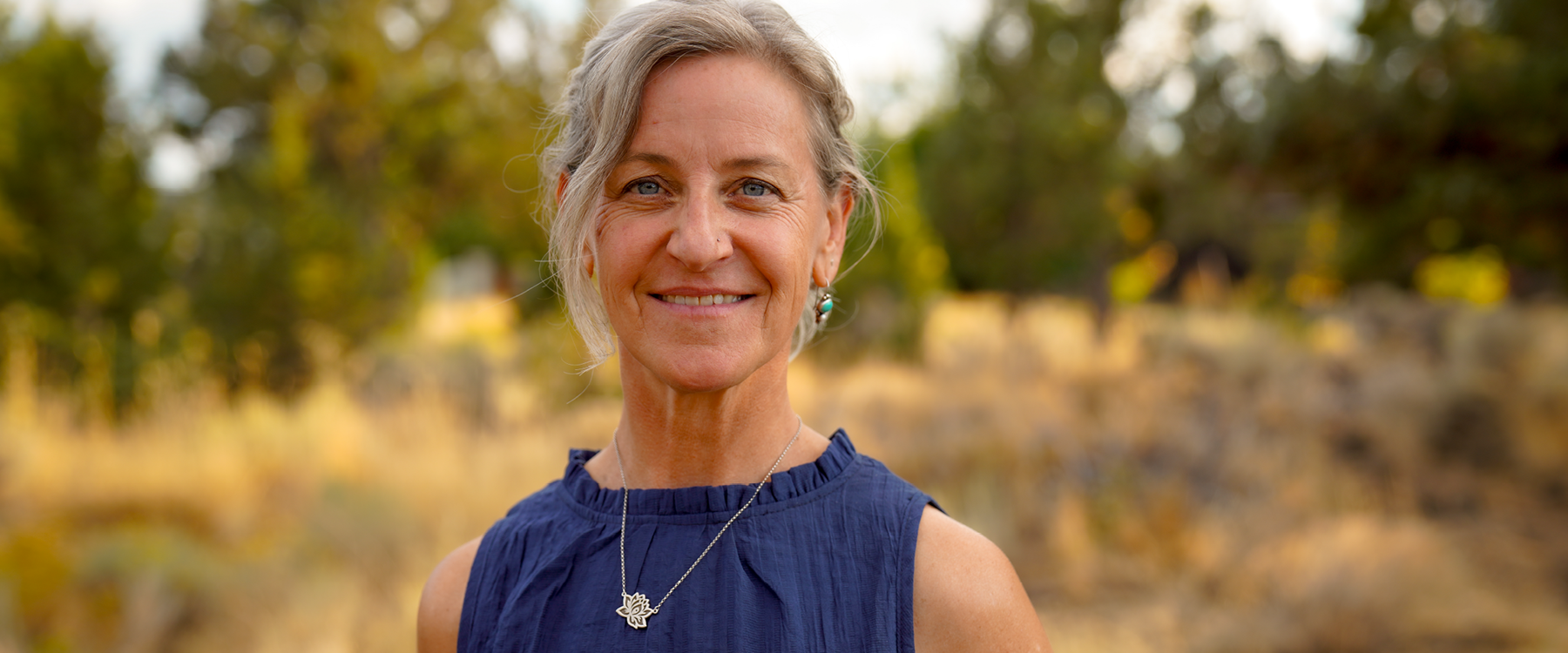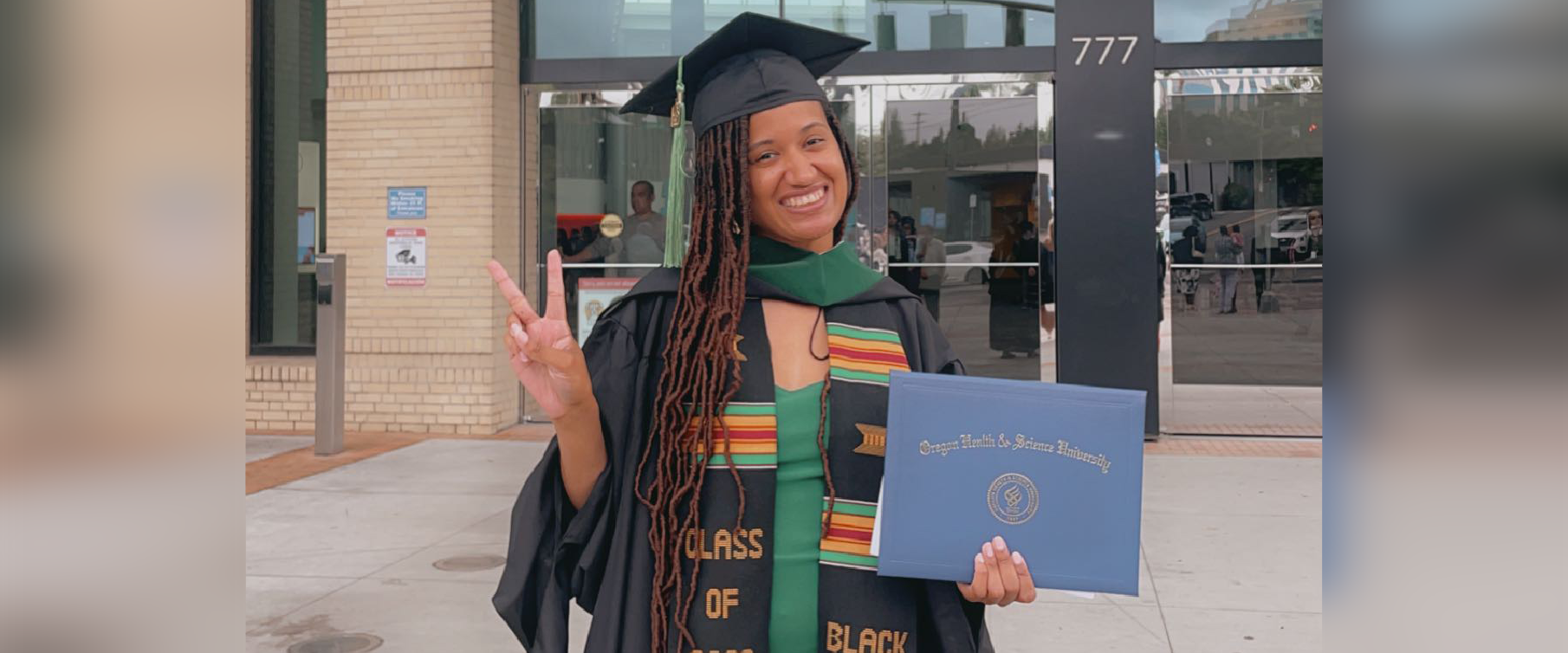By Romel Hernandez
For the OHSU School of Medicine’s “Bridges” magazine
Mikayla Stevens, M.D. ’21, spent her early childhood living with her mom in a trailer in Klamath Falls, Oregon, where her family made ends meet with food stamps. In school, she worked hard, becoming the first in her family to earn a college diploma and eventually earning her medical degree from OHSU.
When the time came for Stevens to decide where to complete her three-year family residency, a place where she could settle down and establish herself as a family practitioner, she felt there was only one choice: back home to Klamath Falls.
“Getting to serve my own community was important to me,” says Stevens, in her third and final year in the Cascades East-OHSU Family Medicine Residency Program in partnership with Sky Lakes Medical Center. “It was really about coming home.”
In a rural region struggling to provide adequate access to health care, Cascades East has been a success story in the Klamath Basin since it accepted its first family medicine residents in 1994. The program has grown to its current size of 25 residents (expanding soon to 27) based at Sky Lakes, the sole full-service hospital in a 10,000-square-mile swath of southcentral Oregon and northern California, and its presence there is making a positive difference.
“Our residents come from across the country, so there are many pathways that lead them to our program,” says Joyce Hollander-Rodriguez, M.D. ’00, R ’03, the school’s associate dean of graduate medical education and herself a 2003 graduate of Cascades East. “Ultimately, we want people who align themselves with our mission, who are seeking that deeper connection and continuity with their community. We’ve learned that residency training in a rural setting is the most important factor in whether doctors choose to establish their practices in a rural environment.”
Building out the medical community
The Klamath Basin is renowned for its high desert landscapes and natural splendor — particularly as the gateway to Crater Lake National Park. The Klamath Tribes, the basin’s original and continued inhabitants, describe its abundant forests, lakes and wetlands as “this rich land east of the Cascades.” Today the basin is also dotted with cattle ranches and farms growing crops such as wheat and potatoes. Locals as well as visitors prize the region for its array of outdoor activities, including hiking, biking, fishing and birdwatching. With its 300-plus sunny days every year, Klamath Falls bills itself as the “City of Sunshine.”
But Klamath’s close-knit community also faces significant social challenges, shared by many rural areas across the state and country. Klamath County rates near the bottom of Oregon’s counties by nearly every socioeconomic and health measure. In Klamath County, 1 in 5 residents live in poverty, nearly twice the state average. The county’s rates of unemployment and high school graduation — as well as health indicators such as diabetes and smoking — are worse than the state averages.
Limited access to medical care only exacerbates existing inequities by creating what public health researchers define as the “rural mortality penalty.” The term describes the disparities in mortality rates in rural versus urban and suburban communities, directly due to poverty and a range of related risk factors, including a dearth of health resources. Klamath County has 920 people per primary care physician compared to Multnomah County’s rate of 670. The average life expectancy for Klamath residents is 75.5 years versus residents of Multnomah County at 79.4 years.
Cascades East is a key part of the strategy for remedying that gap both in Oregon and across the country. About 80% of residents who’ve completed the program over the past two decades have since gone on to practice in rural communities. What’s more, a good number of those residents have stayed in the area; 3 out of 4 primary care physicians practicing in the Klamath Basin are graduates of the program.
The long game
There are indicators showing these efforts are making a difference. In the past decade, Klamath’s ratio of population to physicians improved nearly 25%.
“It can take generations to change patient health outcomes,” says Hollander-Rodriguez. “What we’re aiming for at Cascades East is creating a culture of excellence in our health care delivery system — it’s about the long game.”
The commitment to excellence starts with selecting the highest-quality residents who want to train in a disadvantaged rural area. Cascades East is a highly competitive program with between 400 to 600 candidates participating in the national residency match for nine open spaces.
While the great outdoors is certainly an added attraction, residents and doctors who come to the area to train and work say they mostly value the rural medicine mission and becoming part of a tight-knit community where they get to know patients as neighbors.
“Rural communities are significantly under-resourced, so you have to be smart about how you tackle these issues,” Hollander-Rodriguez says. “In a place like this, you have the advantage of a strong community to help get things done.”
“I couldn’t find anywhere
Stewart Decker, M.D., R ’17
else as committed to community
preventive medicine.”
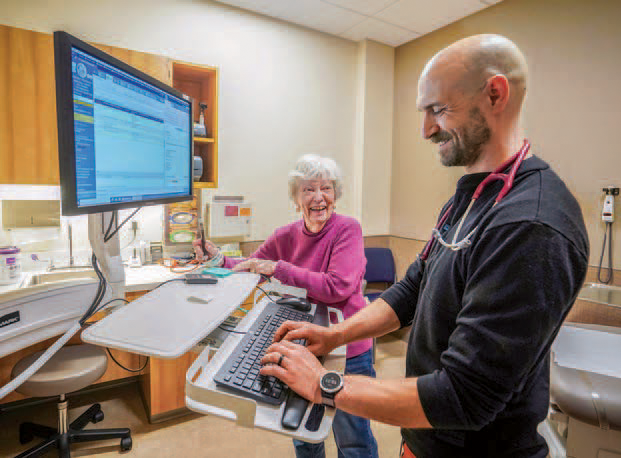
Broad spectrum training
In addition to that sense of mission, many residents are drawn to the program for the opportunity to develop a comprehensive set of medical skills, from obstetrics/ gynecology and behavioral health to emergency medicine and minor surgery. In their three years, the family medicine residents also rotate through stints in Portland, Medford (for neonatal intensive care), and five weeks in a “frontier community” such as John Day, Enterprise or Lakeview.
“You get a really broad spectrum of training here — more so than you might get in a bigger place,” says Grant Niskanen, M.D. R ’96, part of the first class of residents from Cascades East.
The school is also launching a new family medicine residency program next year that begins in Portland and finishes the last two years in Madras in Central Oregon. Hollander-Rodriguez explains, “Our residents are learning to be excellent in more flexible ways, which will enable them to adapt to the needs of their community and ultimately thrive, especially in places with scarce resources.”
The Sky Lakes Wellness Center is a prime example of that can-do spirit, offering a range of programming to promote good health practices and preventive care. The wellness center’s medical director, Stewart Decker, M.D., R ’17, completed his Cascades East residency in 2017 and stayed to work in a place he came to love.
“I was astonished to get to do this job right after my residency,” he says. “I couldn’t find anywhere else as committed to community preventive medicine.”
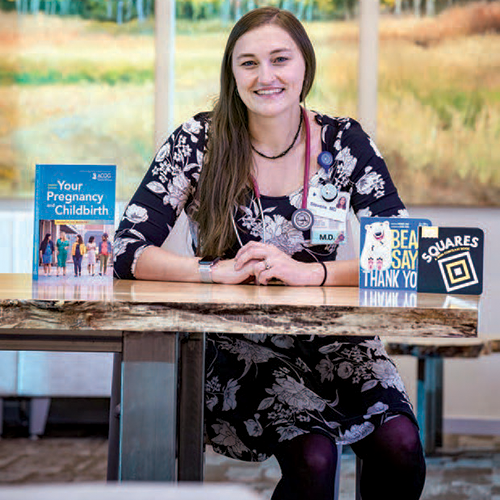
“Itʼs a dream come true for me
Mikayla Stevens, M.D. ʼ21
to return to Klamath and help
fill the need for physicians
in rural Oregon.”
Deep roots
That community-centric approach to addressing the gap in access to health care is exactly what draws residents like Mikayla Stevens to Cascades East.
“I grew up here, so I know how hard it can be to get in to see a doctor or a specialist,” she says. “When you practice family medicine in a place like this, you have to do so much more than you would in a bigger city.”
Because of her deep roots in Klamath Falls, Stevens frequently treats patients she grew up with, which she views as a unique advantage of the job. She has been on duty in Sky Lakes Family Birth Center when relatives and friends have gone into labor. She once was able to tend to the family of a high school friend in the ICU.
“I think it was comforting for them to see a familiar face,” she says. “Having that personal relationship helped ground them during a difficult time. But whether or not we knew each other growing up, I like the chance to connect with my patients here.”
As a teenager, Stevens didn’t always appreciate the virtues and rewards of small-town life, but she does now. In addition to going through her medical school and residency training for the past seven years, she and her husband are raising their three young children.
“It’s so quiet and beautiful, and there are so many outdoor activities minutes from your door,” she says. “This place has a way of sucking you in — in a good way.”
